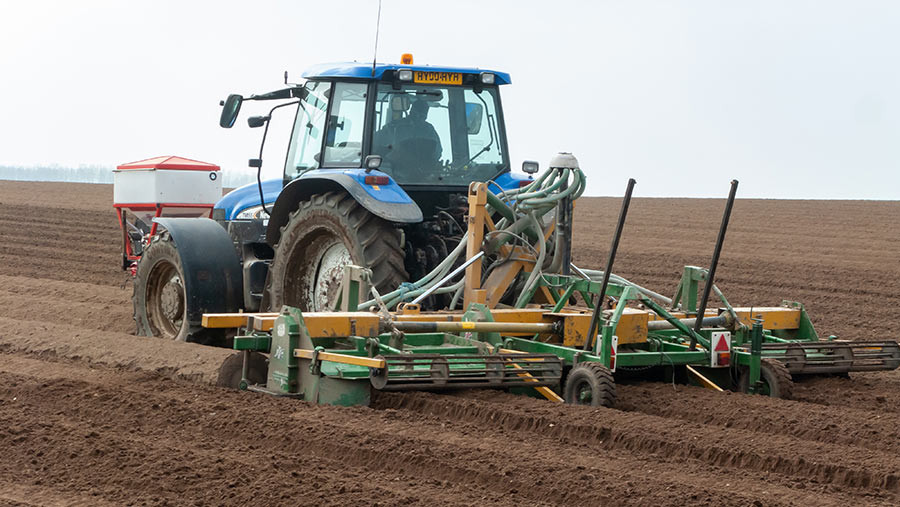Nematicide Red Tractor rules for farmers explained
 © Blackthorn Arable
© Blackthorn Arable Potato and sugar beet growers have to comply with the Best Practice Protocol for nematicides if they are part of the Red Tractor assurance scheme.
The protocol, which applies to sugar beet growers for the first time in 2020, is designed to protect the environment and ensure granular nematicide products remain available to growers for tackling potato cyst nematodes (PCN).
Granular nematicides are an essential element in an integrated strategy for controlling PCN.
The pest costs the potato industry more than £25m each year.
See also: Potato grower uses new nematocide to tackle PCN in salad crops
Although this is the first time that growers will need to produce records for the scheme, the best practice guide has been an appendix in some of Red Tractor’s fresh produce crop protocols in recent seasons, and is already widely adopted by most growers.
The guide was created by the Nematicide Stewardship Programme (NSP), a cross-industry group that was set up in 2015, consisting of product manufacturers and industry bodies, such as the AHDB.
It covers all aspects of granular nematicide use from delivery on-farm and operator handling, machinery calibration and maintenance, through to application and storage in six steps.
Best Practice Protocol for nematicides
1.Qualify
Operators who are planning to apply nematicides must be PA4 or PA4G accredited and also be a member of the National Register of Sprayer Operators.
Alternatively, growers can complete specific training on nematicide application through Artis stewardship training, which can be done online through a new e-learning module, which includes a printable certificate to show at a Red Tractor inspection.
2. Calibrate
Granular applicators should be checked before the start of the season and on each working day, to ensure that all pipework is correctly fitted and the hopper bungs are in place and hopper lids are secure.
When the applicator is in use, granules should also be monitored to check they are flowing correctly.
The applicator must also be inspected and certified by a National Sprayer Testing Scheme-qualified engineer every year.
3. Single pass
All granular nematicides should be applied and incorporated within a single pass immediately prior to planting, with no granules left on the surface.
4. Shut-off
All applicators must be fitted with a device in the cab which allows the operator to shut-off the granule flow before the end of each row.
For potato growers, shut-off must be achieved at least 3m from the end of each row. All growers should be mindful of the delay between shut-off and granules clearing the outlet.
Applicators that were produced prior to 2017 will not necessarily already have the capability to meet the new standards, but all applicators which are on-farm can meet the standards, with several options being open to growers.
Approved systems include manual shut-off using an electric or cable clutch, or a hydraulic land wheel lift.
An electric or hydraulic drive can also be used, and has the additional benefit of auto rate control and record-keeping, which can be used by growers to prove their applied area.
Alternatively, operators can harness existing technology already built into their tractors by utilising GPS and uploading pre-formulated maps, which means shut-off will be automatic.
5. Spillages
Hoppers should be filled within designated sites that can easily be checked for spillages.
Small spillages should be buried immediately, ensuring that no granules are left on the surface.
Larger spillages should be removed into an empty nematicide container, clearly labelled and returned to the manufacturer.
6.Check
Monitor treated fields 24 hours after application for any adverse effects on wildlife.
If any are found, growers should contact Natural England’s Wildlife Incident Investigation Scheme on 0800 321600, and the product manufacturer.

